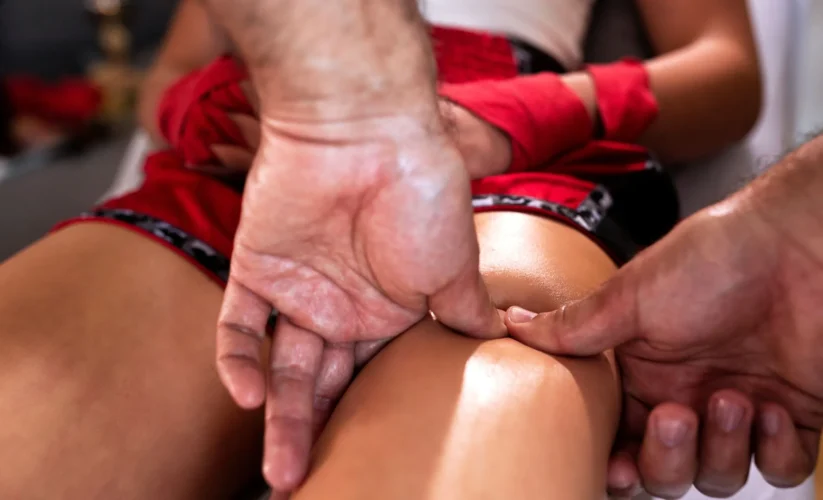
How Can Muscle Strain Recovery Be Accelerated For Swift Healing
How do you speed up muscle strain recovery? Muscle strains can be painful and frustrating, hindering your daily activities and fitness goals. However, with the right approach, you can expedite recovery and get back to feeling your best sooner. This guide will explore effective strategies to speed up muscle strain recovery, allowing you to bounce back stronger and faster.
How To Speed Up Muscle Strain Recovery
To accelerate muscle strain recovery, prioritize rest, apply ice packs intermittently, and gently stretch to promote blood flow and flexibility. Additionally, ensure proper nutrition and hydration to support tissue repair and consider seeking professional guidance for personalized treatment strategies.
Understanding Muscle Strain:
Before diving into recovery techniques, it’s essential to understand what exactly a muscle strain is. A muscle strain, commonly called a pulled muscle, occurs when muscle fibers stretch or tear due to overexertion, sudden movements, or inadequate warm-up. Symptoms include pain, swelling, stiffness, and sometimes bruising.
Immediate Treatment:
When a muscle strain occurs, starting treatment promptly is crucial to minimize damage and accelerate healing. The R.I.C.E. method is a widely recommended approach:
Rest: Avoid activities that aggravate the injury and give your muscles time to heal.
Ice: Apply ice packs to the affected area for 15-20 minutes every few hours to reduce pain and inflammation.
Compression: Use compression bandages to support the injured muscle and reduce swelling.
Elevation: Keep the injured muscle above heart level to reduce swelling.
Gentle Stretching and Mobility Exercises:
Once the acute phase has passed, gradually introduce gentle stretching and mobility exercises to prevent stiffness and improve flexibility. Perform dynamic stretches that target the affected muscle group, moving through a comfortable range of motion. Avoid overstretching or pushing through pain, as this can exacerbate the injury.
Foam Rolling and Massage Therapy:
Foam rolling and massage therapy can relieve tension in the muscles and promote blood flow to the injured area. Use a foam roller to gently massage the affected muscle, focusing on tight or tender spots. Alternatively, seek professional massage therapy to target deeper layers of muscle tissue and accelerate recovery.
Nutritional Support:
Proper nutrition plays a crucial role in muscle strain recovery. Ensure you’re consuming enough protein to support muscle repair and growth. Additionally, include foods rich in vitamins C and E, zinc, and omega-3 fatty acids, which have anti-inflammatory properties and promote tissue healing. Stay hydrated by drinking plenty of water throughout the day to facilitate muscle nutrient delivery.
Gradual Return to Activity:
As your muscle strain heals, gradually reintroduce activity and exercise, starting with low-impact movements and increasing intensity. Listen to your body and avoid pushing too hard too soon, which can lead to re-injury. Incorporate strength training exercises to rebuild muscle strength and stability, focusing on proper form and technique.
Cross-Training and Alternative Workouts:
While recovering from a muscle strain, consider incorporating cross-training and alternative workouts to maintain fitness without exacerbating the injury. Activities such as swimming, cycling, or yoga can provide a low-impact way to stay active while allowing the injured muscle to heal. Modify movements as needed to avoid strain on the affected area.
Adequate Rest and Sleep:
Rest and sleep are essential to recovery, allowing your body to repair and regenerate damaged tissues. Aim for 7-9 hours of sleep each night to support muscle recovery and overall well-being. Listen to your body’s cues and prioritize rest when needed, avoiding overexertion or pushing through fatigue.
Consultation with a Healthcare Professional:
If you’re experiencing persistent pain or limited mobility despite following these recovery strategies, consult with a healthcare professional for further evaluation and treatment. They can provide personalized recommendations based on the severity of your injury and help ensure a safe and effective recovery.
Apply Ice and Compression:
How do speed up muscle strain recovery? Ice therapy is an effective way to reduce inflammation and alleviate pain associated with muscle strains. Apply an ice pack to the injured area for 15-20 minutes every few hours during the first 48 hours following the injury. Compression bandages can also help reduce swelling and support the injured muscle. Be sure not to apply ice directly to the skin to prevent ice burns, and always wrap the ice pack in a cloth or towel.
Elevate the Injured Limb:
Elevating the injured limb above heart level can help minimize swelling by promoting proper circulation and drainage of fluids. Elevate the affected area using pillows or cushions to reduce pressure and facilitate the healing process.
Conclusion:
How to speed up muscle strain recovery? Muscle strains can be a setback, but with the right approach, you can expedite the process and get back to doing what you love. By implementing strategies like immediate treatment, gentle stretching, nutritional support, and a gradual return to activity, you can accelerate muscle strain recovery and regain strength and mobility sooner than you thought possible. Remember to listen to your body, prioritize rest, and seek professional guidance if needed for a successful recovery journey.




